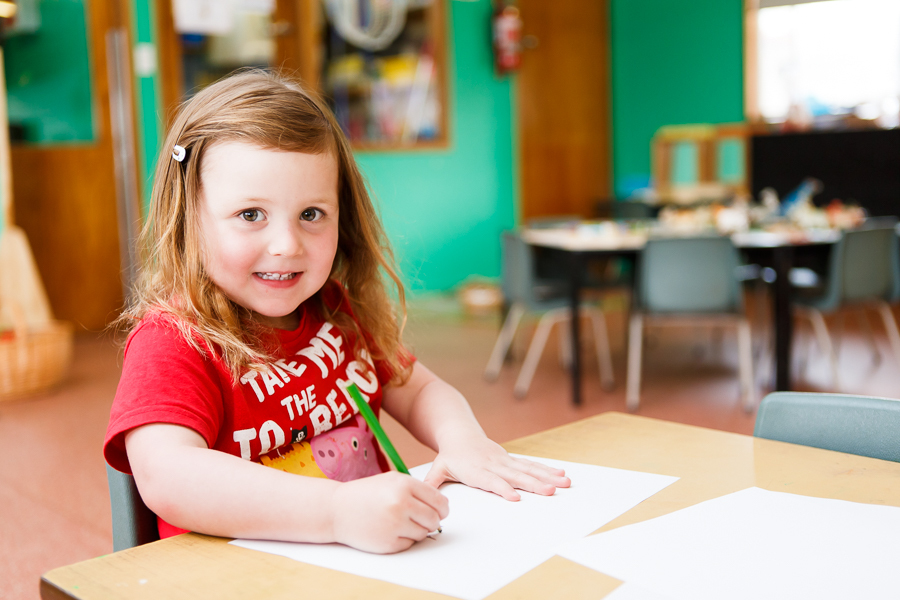
Post updated July 2025.
There’s something deeply satisfying about watching a young child pick up a crayon and confidently make their mark on paper. The colours, the lines, the joyful chatter about what they’ve “drawn”, even if it’s just a squiggle, are signs of something powerful happening beneath the surface.
At Papilio Early Learning, we see drawing not just as an art activity, but as a window into a child’s thoughts, emotions, and imagination. Whether they’re making their very first marks or proudly sketching a rainbow-filled world, drawing plays an important role in every child’s development.
Why Drawing Matters in the Early Years
Children are natural storytellers, and drawing is often one of the first ways they learn to express ideas before they can write words. According to Jola Sung, Education Advisor at Affinity Education Group:
“Children are effective communicators; through the creative arts, they learn to make meaning and freely express their thoughts, ideas and feelings. Drawing also acts as a powerful way for caregivers to understand how a child feels.”
When you take time to sit beside your child and ask about their artwork, you’re not just admiring a picture, you’re building a bridge between their inner world and yours.
Developmental Benefits of Drawing
Drawing supports growth in all areas of early learning. It helps children:
- Strengthen fine motor skills by holding and controlling pencils, crayons, or paintbrushes
- Improve hand-eye coordination as they learn to direct their movements
- Explore early literacy and storytelling by assigning meaning to shapes and symbols
- Practice focus and emotional regulation through slow, repetitive mark-making
- Build confidence and independence by making their own creative choices
All of these benefits align beautifully with our Lifelong Learning Curriculum, which values creative expression as a key part of a child’s cognitive, emotional, and social development.
Drawing with Toddlers: It’s All About the Experience
From as early as 12-18 months, toddlers begin experimenting with drawing through big, joyful scribbles. They’re not trying to create something specific, they’re exploring how it feels to make marks, and loving the freedom to do it.
At this age, drawing is all about:
- Sensory enjoyment: the feel of a crayon or the sound of chalk
- Independence: being in charge of the paper and colours
- Physical movement: large arm motions and whole-body engagement
Try this: Sit with your toddler and draw shapes or lines alongside them. Let them scribble freely while you narrate: “You made a big circle!” or “I see red and yellow - wow!” This builds vocabulary and connection, without adding pressure to “draw something.”
Tip: Avoid turning their scribbles into something recognisable (e.g. “Is that a sun?”). Instead, ask open-ended questions like, “Can you tell me about this part?”
Drawing with Preschoolers: Colour, Confidence and Creativity
As children’s fine motor skills improve (usually between 3-5 years), their drawings begin to change. You’ll see:
- Controlled lines, zig-zags, circles and crosses
- The beginnings of shapes that represent real things - houses, people, animals
- Bold use of colour as they make creative choices
- Attempts to “tell stories” through their pictures
This is a great time to introduce new materials: crayons, coloured pencils, markers, watercolours, chalk, or even drawing apps (in moderation). The variety helps keep their creativity fresh and gives them more ways to express themselves.
Tip: Encourage their confidence by displaying their artwork somewhere they can see it - on the fridge, their bedroom wall, or a special “gallery” space in your home.
Jola’s Top Tips for Encouraging a Love of Drawing
- Display their work at their eye level to build pride and ownership
- Talk about the process, not just the outcome - comment on colours, lines, and what they’re working on
- Avoid comparing your child’s drawings to others or correcting them
- Draw together, but don’t direct - let your child lead and celebrate whatever they create
- Keep drawing tools handy so they can access them regularly and feel in control of their creative time
At Papilio, our educators respond to children’s drawings with genuine curiosity, asking open-ended questions, listening to the stories behind the scribbles, and helping each child feel seen and celebrated.
Drawing as a Foundation for Lifelong Learning
Drawing isn’t about creating perfect pictures, it’s about exploration, expression, and confidence. At Papilio, creative experiences like drawing are woven through our learning environments every day. Whether your child is in the toddler room or preparing for school, we make space for imagination, storytelling, and proud moments of “Look what I made!”
Because when your child picks up a pencil, they’re doing more than making marks on a page, they’re sharing their story, discovering their voice, and building a love for learning that will last a lifetime.
Curious how drawing and other creative learning experiences support your child’s development? Chat with our educators! Find your local Papilio centre and book a tour.